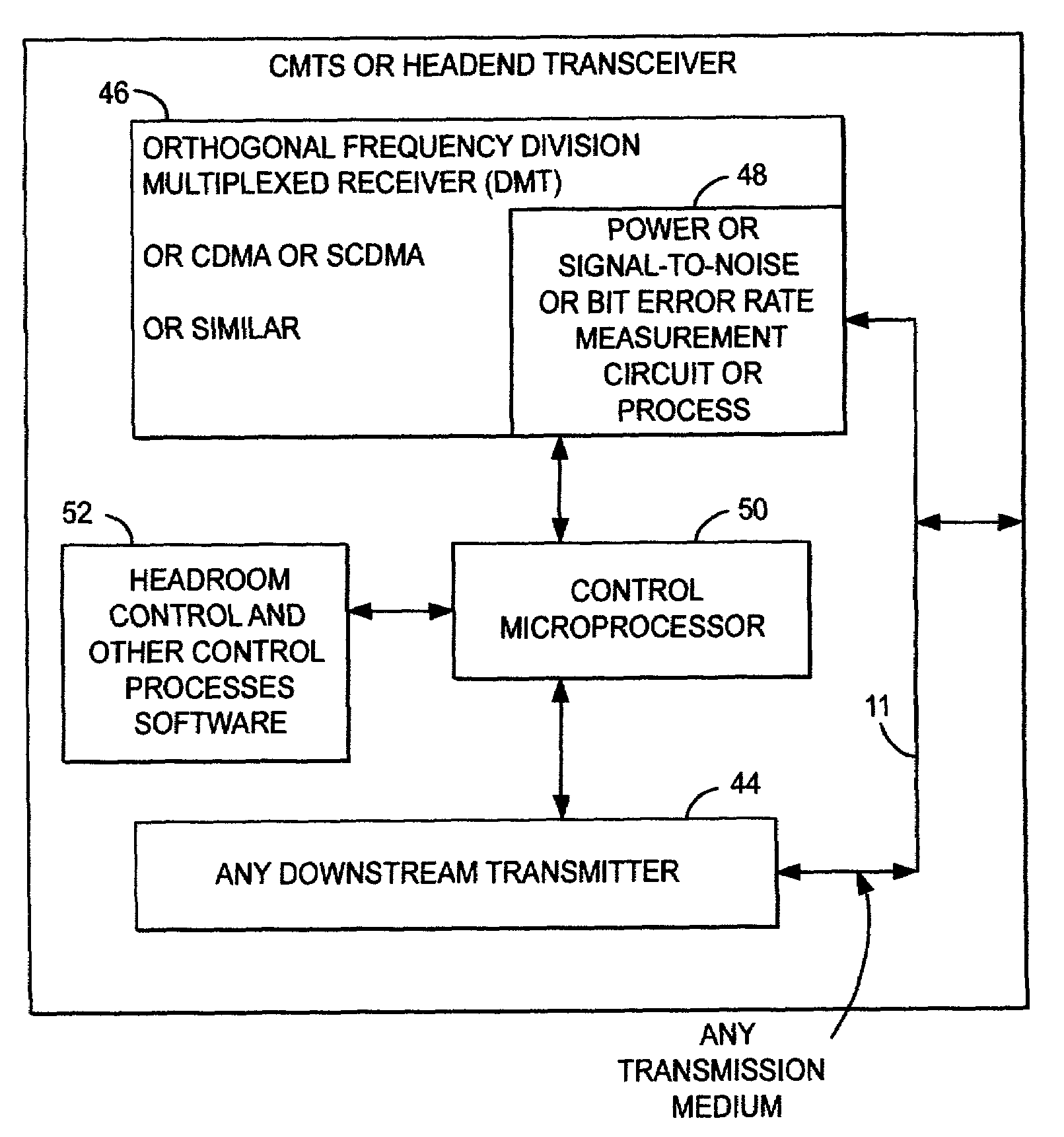Method and apparatus to improve SCDMA headroom
a headroom and headroom technology, applied in transmission systems, transmission systems, television systems, etc., can solve the problems of insufficient power output of the transmitter in the more remote cable modem, the loss of the cable plant, and the inability to get the transmission through to the headend modem
- Summary
- Abstract
- Description
- Claims
- Application Information
AI Technical Summary
Benefits of technology
Problems solved by technology
Method used
Image
Examples
Embodiment Construction
[0019]Spreading the spectra of data by code division multiple access causes the power of a burst to be spread out over time and over the allocated bandwidth. This is because, in contrast with TDMA when the entire symbol is transmitted in one symbol time, in CDMA, each symbol is transmitted over a large number of chip clock cycles where the chip clock is running much faster than the symbol clock. This spreads the spectrum of the symbol, but results in less power being transmitted during any particular interval. Thus, over any particular interval of time, less power is received with the spread spectrum signal than would have been received had the original burst not been spread although the total energy received if the power is integrated over time would be the same. If more chips are used per symbol, less power can be used to transmit a symbol and it will still get through.
[0020]With multiple remote transceivers all transmitting over a shared media to a single CMTS headend transceiver...
PUM
 Login to View More
Login to View More Abstract
Description
Claims
Application Information
 Login to View More
Login to View More - R&D
- Intellectual Property
- Life Sciences
- Materials
- Tech Scout
- Unparalleled Data Quality
- Higher Quality Content
- 60% Fewer Hallucinations
Browse by: Latest US Patents, China's latest patents, Technical Efficacy Thesaurus, Application Domain, Technology Topic, Popular Technical Reports.
© 2025 PatSnap. All rights reserved.Legal|Privacy policy|Modern Slavery Act Transparency Statement|Sitemap|About US| Contact US: help@patsnap.com



